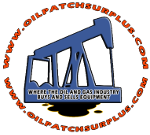The flowback process in the oilfield is a crucial step in the production of oil and natural gas from a well. Here’s a simplified explanation of how it works:
- Hydraulic Fracturing: In hydraulic fracturing (fracking), a well is drilled deep into the earth to reach oil or natural gas reserves trapped in rock formations. Once the well is drilled, a high-pressure fluid mixture, often consisting of water, sand, and chemicals, is injected into the well to create fractures in the rock, allowing oil or gas to flow more freely.
- Production and Flowback: After fracking, the well is put into production. During this phase, a mixture of oil, natural gas, water, and hydraulic fracturing fluids flows back up the well to the surface. This mixture is known as “flowback.”
- Separation and Treatment: The flowback fluids are directed to a series of tanks or separators on the surface. Here, they undergo a separation process to separate the valuable oil and gas from the water and other fluids. Typically, the oil and gas are collected and sent to storage or processing facilities, while the remaining water is treated or disposed of according to regulations.
- Recycle and Reuse: In some cases, operators may treat and recycle a portion of the flowback water for use in future fracking operations. This can be both cost-effective and environmentally beneficial.
- Disposal: Any flowback fluids that cannot be recycled or reused are disposed of in accordance with local environmental regulations. This may involve deep well injection, treatment at wastewater treatment plants, or other approved methods.
The flowback process is carefully managed to minimize environmental impact and ensure the safe and efficient extraction of oil and natural gas from the well. It’s important to note that the specifics of the flowback process can vary depending on the location, regulations, and the type of well being operated.
- Flowback Equipment: Various equipment is needed to manage the flowback fluids and solids. This equipment may include:a. Flowback Tanks: These tanks collect the fluids (including water, chemicals, and hydrocarbons) and solids that flow back from the well. They are equipped with level sensors and sometimes heating elements to control the temperature.b. Separators: Separators are used to separate the gas from the liquid and solids. They often consist of vertical vessels where gas rises to the top, and liquids are collected at the bottom.c. Manifolds and Chokes: These components control the flow of fluids and direct them to the appropriate equipment.d. Flare Stacks: In some cases, excess gas may be flared off for safety or environmental reasons.
- Testing and Analysis: Flowback fluids are typically tested to determine their composition, which helps in assessing well performance and environmental compliance.
- Recycling and Treatment: Depending on the composition of the flowback fluids, they may be treated on-site or transported to treatment facilities. Some operators aim to recycle or reuse the water, while others may dispose of it in accordance with regulations.
- Environmental Management: Proper handling and disposal of flowback fluids are critical to environmental protection. Regulations and best practices govern the management of flowback to prevent groundwater contamination and minimize environmental impact.
- Data Collection: Valuable data is collected during the flowback process, including fluid properties and flow rates. This information helps operators optimize well performance and make informed decisions for subsequent operations.
It’s important to note that the specific equipment and procedures used in the flowback process can vary depending on the location, well type, and operator. Additionally, environmental and regulatory considerations play a significant role in how flowback is managed and treated. Properly handling flowback fluids is essential to ensure the safety of the operation and protect the environment.
